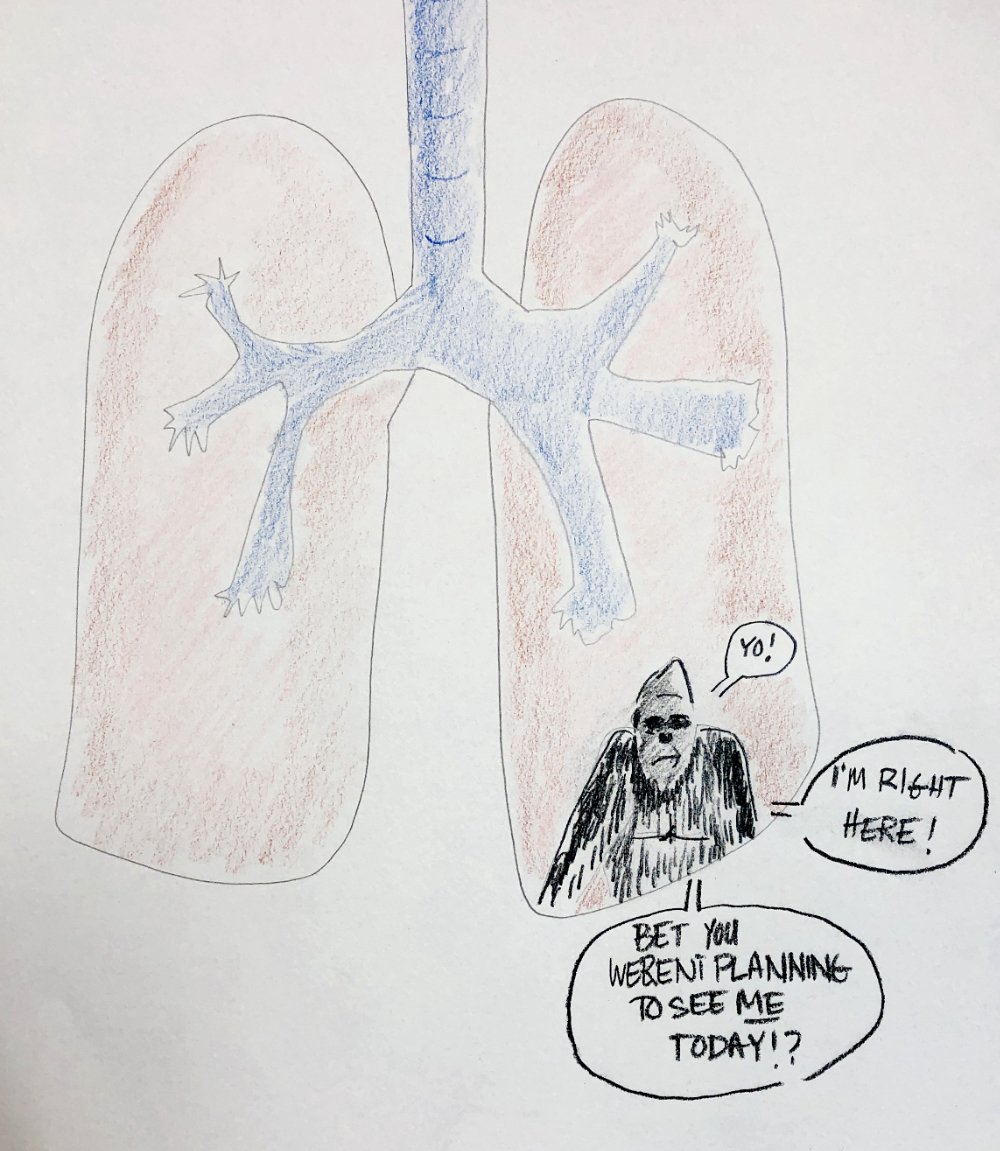
"Tweaking Is Essential to the Drawing Process" (If Steve Jobs Did It, Why Won't You?)
A form of "analysis paralysis" I see my adult drawing students commonly put themselves through is the idea that they have to get something drawn correctly the first time they draw it. This drive for perfection straight out of the gate is horrible for our self-esteem, especially when we're faced with a task we have not yet mastered! I often remind students that they don't know how to imagine the perfect drawing in their head because they have to use their fine motor skills to actually execute the drawing. Fine motor skills are a factor within their control, but more often than not those skills are underdeveloped in adulthood. Because of that, the moving of the hand is a game changer- you can't just "picture it" and be done! And if you're like most of us, you need to be prepared for making adjustments.

Small Victories: Drawing to Heal Traumatic Brain Injuries
I am deeply honored to partner with Small Victories in offering drawing lessons for students recovering from traumatic brain injuries. Founded by Cindy and Derrick Wright, Small Victories provides invaluable support to those on their healing journey. Derrick, a veteran who sustained a traumatic brain injury while serving in Iraq, found new purpose and healing through art. His journey, along with Cindy’s unwavering positivity, inspired the creation of Small Victories to help others find purpose through creativity.
By offering drawing lessons, I’m excited to work alongside this incredible organization and assist clients in their recovery process. Learn more about the impact of Small Victories and join us in supporting this cause by donating to help others discover the power of art in healing

Visual Problem Solving Tricks: A Moving Pencil = Access to New Solutions
Doodling isn't just for fun—it's a proven way to boost focus, comprehension, and memory retention. Studies show that doodling helps prevent daydreaming, keeping the mind engaged and aiding in the absorption of new information. Handwritten notes, especially when paired with doodles, improve retention and help individuals better reconstruct learned concepts over time.
Next time you or your child need a mental reset, encourage doodling. It’s a simple yet effective way to improve learning and productivity.

Feeling Stuck While Learning to Draw: How to Turn a Major Meltdown Into a Brilliant Breakthrough!
If you're passionate about learning to draw, it's inevitable: some days will feel like a struggle. As artists, we sometimes face the "uncanny valley" of drawing—when your creation just doesn't match the vision in your head, leading to frustration and self-doubt. But this is part of the process! Even young artists like Emily experience these challenges. Through understanding emotions, like anger or disappointment, and embracing the struggles, breakthroughs happen. Drawing isn't just about technical skills, it's about persistence, self-awareness, and accepting the messy parts of the creative journey. If you’ve ever felt stuck, remember—embrace the bumps, and breakthroughs are just around the corner!

Increased Neural Matter? Yes, Please!
Drawing isn’t just for artists—it's a brain-boosting activity that enhances visual imagery, fine motor skills, and procedural memory. Studies show that artists have more neural matter in key areas of the brain, confirming what I've observed for years: drawing strengthens problem-solving abilities. Procedural memory, the brain’s "how-to" memory, plays a vital role in daily tasks and learning new skills. At LZM Studio, drawing helps both kids and adults improve cognitive function, creativity, and real-world problem-solving. Drawing exercises both sides of the brain, making it a powerful tool for development in school, work, and life.

Sophisticated Graphite Pencil Portraits, for Kids and Adults!
Many believe kids can’t draw as well as adults, but with the right guidance, they can! Children like Ellie, age 11, can create impressive portraits with time and practice. Ellie’s portrait took over five hours to complete, showing how patience and focus help kids develop their skills.
Drawing Tips for Kids:
Spend More Time Drawing – Encourage kids to take their time and observe details. Use a timer to gradually increase drawing time for better results.
Focus on the Face Shape and Features – Pay attention to the spaces between facial features. Shading areas like the nose, cheeks, and forehead adds realism to the portrait.
With practice and persistence, kids can improve their drawing skills and create amazing portraits!

How Drawing Is Like Juggling; How Both Are as Difficult to See as a Gorilla on a Radiology Image
Drawing and juggling are both "global skills" that require the integration of smaller component skills. Like a juggler coordinating hands, eyes, and brain to keep objects in motion, an artist must balance elements like line direction, shading, and texture. However, beginners often struggle to focus on all components at once, leading to frustration.
A study of radiologists missing a "gorilla" in medical images illustrates how the brain filters out irrelevant details when focused on a task. Similarly, drawing requires practice and focus to master, much like juggling. With time, both skills improve, sharpening your cognitive abilities and perception.
